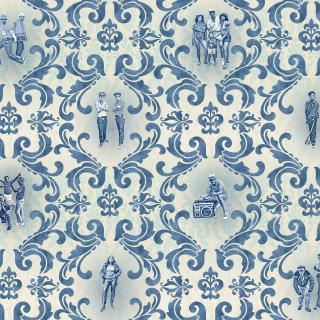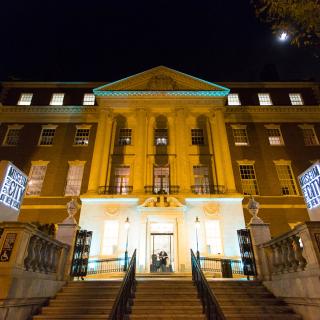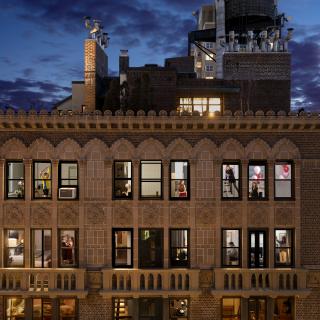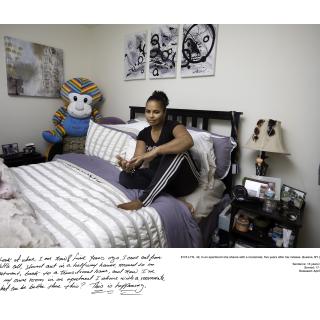New York Now: Home Is the Body
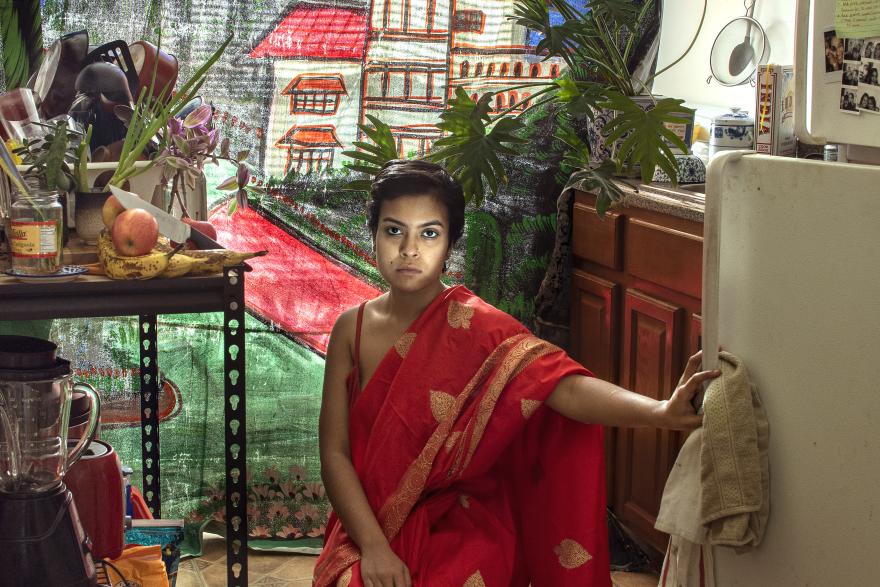
Home is the Body
Picturing the family has never been a neutral act. Family portraits may signify love and care, but they have also historically been used to reinforce hierarchies and norms about the very meanings of family and home. In the early 20th century, for example, indigenous people from the Philippines were put on public display during the 1904 St. Louis World’s Fair and at Coney Island’s Dreamland Park, and derisive family portraits of them were circulated nationwide to characterize Filipinos as inferior to white families. Yet during this same time period, anti-lynching activist Ida B. Wells utilized her own family portrait to argue for Black humanity and to dispel racist representations of African American women and children.
Engaging the fraught history of portrait photography as an oscillating tool for love and violence, several artists in this exhibition use portraiture to explore difficult family histories, questions of personal and collective identity, and the many meanings of home. In self-portraits by artists Cheryl Mukherji and Nona Faustine, their bodies become the medium that channels larger histories and geographies of imagined and real ancestors. Through their skin, hair, clothing, and gestures, they reveal broken lineages and failed dreams as much as they show people’s creativity in forging lives across diasporas and displacements.
Other artists, such as Dean Majd and Joana Toro, make portraits of their loved ones to highlight individual and collective experiences that have for too long been unexamined or pictured stereotypically. Creating new portraits by and for minoritarian communities, they visualize intimacy and the family with complexity and care.
CHERYL MUKHERJI
1. Playing Eve, 2021
2. I Want a Home, 2021
3. Still Life (I), 2021
4. Mask, 2021
INKJET PRINTS
5. NY Backdrop, 2020
ACRYLIC ON LINEN
6. Dulhan Maachis, 2022
OFFSET PRINT ON MATCHBOX
7. Classifieds Matrimonial, 2021
SILKSCREEN ON NEWSPRINT
Unknown photographer
8. Maa’s Matrimonial Photograph, 1986
9. Maa’s Matrimonial Photograph, 1992
10. Maa as a Girl, 1977
VERNACULAR PRINTS
Unknown photographer, modern print by Cheryl Mukherji
11. Bithika Roy Choudhary (Naani), 2021
HAND-TINTED ARCHIVAL PRINT
From the series “Wanted Beautiful Home Loving Girl”
Cheryl Mukherji’s “Wanted Beautiful Home Loving Girl” playfully challenges the upper-caste South Asian genre of matrimonial photographs, which were central to her own parents’ meeting and marriage. As part of the arranged marriage process, matrimonial photographs are used to signal to a prospective bride or groom’s family that they are making an “equal match” between their children. Desirable qualities and status are visually projected through the sitter’s jewelry and clothing, along with the photo’s setting and props. Through these photos, young women are evaluated for their intelligence, beauty, and skill in domestic duties—or how much they appear to be “a beautiful home-loving girl.” Matrimonial photographs are thus highly loaded objects that Mukherji writes are “potent with possibility, imagination, and a desire for an alliance.”
In “Wanted Beautiful Home Loving Girl,” self-portraits of the artist in her Brooklyn apartment are installed alongside matrimonial photographs of her mother in her twenties. The self-portraits convey an empowered single woman who is anything but demure. She explores her femininity and empowerment as she smokes, doesn’t smile for the camera, and challenges modesty that the matrimonial photographs impose. In these reimagined matrimonial photographs, Mukherji communicates her resistance to patriarchy and her desire to create a truly equal relationship with her future partner.
NONA FAUSTINE
I Like Tea With My Plato, Seneca Village, Central Park, NYC, 2021
From the series “White Shoes”
ARCHIVAL PIGMENT PRINT
For nearly a decade, Brooklyn-born Nona Faustine has created a series of self-portraits that document, memorialize, and reclaim places that have associations with the city’s 200-year history of slavery and oppression of African American and First Nation people. In each of the photographs, the photographer uses her body as a monument to a past that has been largely erased from the collective memory. The series, collectively titled “White Shoes,” is a reference to the accessory worn by Faustine in every photograph in reference to the ever-present white patriarchy.
The photograph on view depicts Faustine taking tea on the former site of Seneca Village, the first free Black community in Manhattan. Seneca Village was founded in September 1825 when two members of the New York African Society for Mutual Relief (Andrew Williams and Epiphany Davis) bought a total of 15 lots in the area. At its apex, the community had more than 200 residents, three churches, two schools, and three cemeteries. The community was eradicated in 1857, when its residents were forced out and their homes torn down to make way for the construction of Central Park. Faustine’s photographs are a powerful reminder of Black resilience and home-making despite terrible odds.
DEAN MAJD
1. bohemian rhapsody, 2017
2. dallas (phoenix ash), 2022
From the series “Hard Feelings”
ARCHIVAL PIGMENT PRINTS
Born and raised in Astoria, Queens, Palestinian American artist Dean Majd explores the contradictions of masculinity in “Hard Feelings.” This long-term project features his chosen family of predominantly male friends in New York’s skateboarding and graffiti scenes. Over the years, Majd candidly photographed his friends at parties, bars, on the streets, and in their bedrooms on a point-and-shoot 35mm film camera. Viewers catch glimpses into the intimate friendships between men, and their personal and collective forms of mourning after the deaths of close members of their community. Not all their ways of coping are constructive, however, and many images interrogate toxic masculinity and the self-harm and violence that can occur when men repress their vulnerability.
“Hard Feelings” peels back the tough veneer of masculinity to reveal the tenderness underneath. It explores "one's need to face their own shadow," and the project was born from that desire. As Majd says, “The people in my images are my family, my blood... I love them deeply, and through that love, these images are made.” The two works presented here show the project’s evolution over time, with bohemian rhapsody being one of the first photographs and dallas (phoenix ash) as its last.
Image Credit: Cheryl Mukherji, I Want a Home, 2021. Courtesy of the artist.
